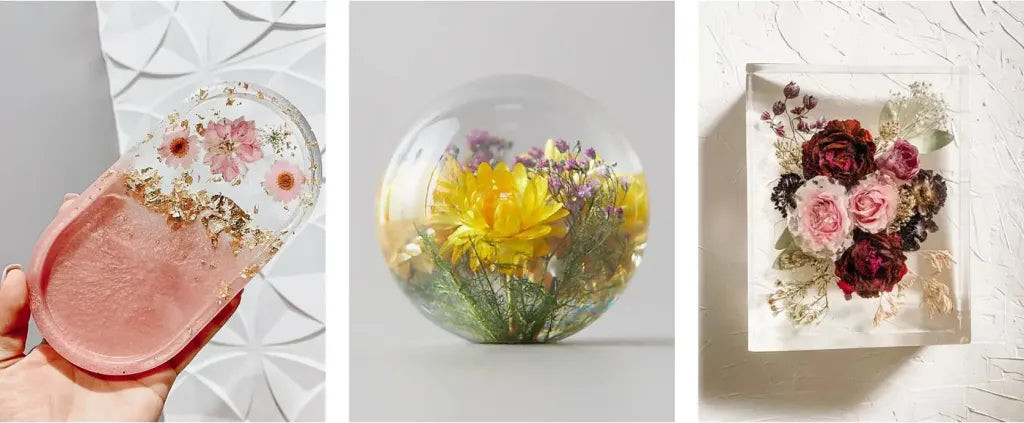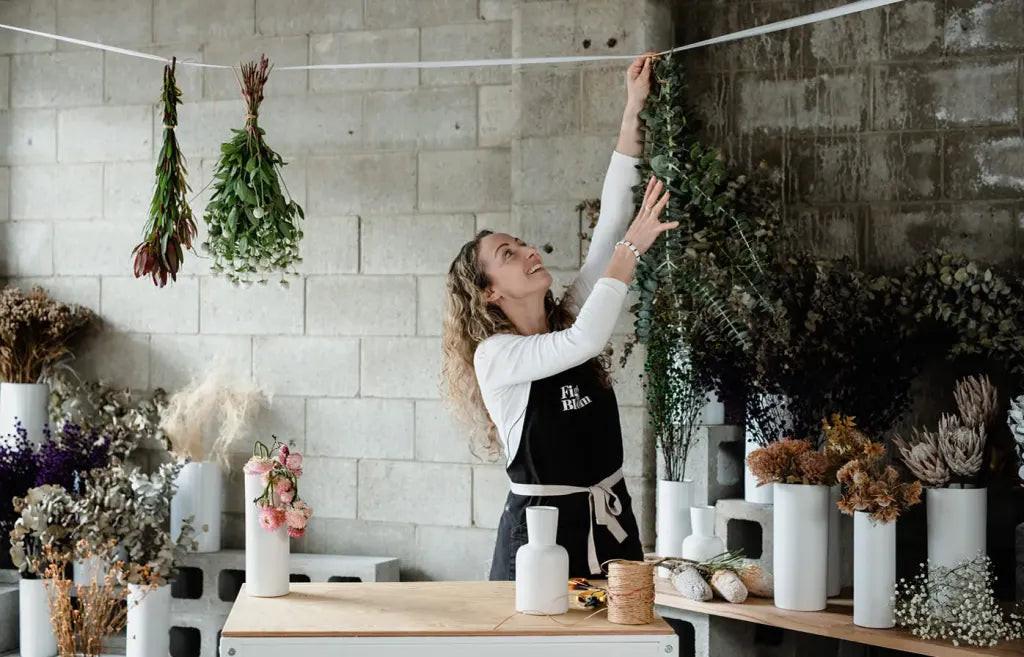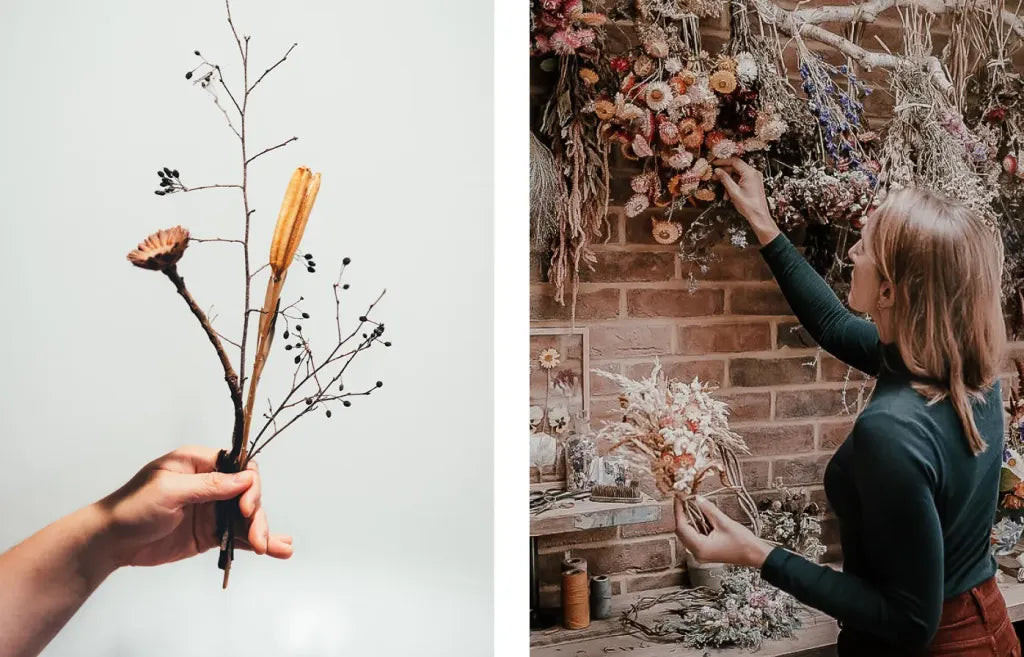Want to keep your cherished blooms forever? You can with the right methods, and savewhere.net is here to guide you through preserving flowers and memorializing your floral treasures. Discover how to dry, press, and cast your flowers to retain their beauty, create lasting keepsakes, and save money by doing it yourself.
1. What Are the Best Ways to Preserve Flowers Forever?
There are many effective ways to preserve flowers forever, including air drying, pressing, using silica gel, and embedding in resin. Each method offers a unique way to maintain the beauty and sentimentality of your favorite blooms, allowing you to enjoy them for years to come.
Preserving flowers isn’t just about keeping them around longer; it’s about holding onto memories, art, and the beauty of nature. Whether it’s a bouquet from a special occasion or flowers from your garden, preserving them allows you to cherish them indefinitely. This article will guide you through several popular methods, offering tips and tricks to achieve the best results.
1.1. Air Drying: The Simplest Method
Air drying is one of the easiest and most traditional methods for preserving flowers. It works best with flowers that have less moisture, such as roses, lavender, and hydrangeas. The process involves hanging the flowers upside down in a dark, dry, and well-ventilated area.
- Process:
- Remove excess foliage.
- Bundle the stems together.
- Hang upside down using string or rubber bands.
- Wait for two to four weeks until completely dry.
Air drying is effective because it allows the moisture to evaporate slowly, maintaining the flower’s shape. According to a study by the U.S. Department of Agriculture, proper air circulation is crucial to prevent mold growth and ensure successful drying.
1.2. Pressing: Perfect for Flat Flowers
Pressing is ideal for preserving flat flowers like pansies, violets, and ferns. This method is excellent for creating bookmarks, framed art, and other decorative items.
- Process:
- Place flowers between two sheets of absorbent paper (like blotting paper or coffee filters).
- Put the paper inside a heavy book.
- Weigh the book down with more heavy objects.
- Wait for one to three weeks until the flowers are completely flattened and dry.
The University of Georgia Extension recommends changing the absorbent paper every few days to remove moisture and prevent the flowers from rotting.
 pressing flowers using book
pressing flowers using book
1.3. Silica Gel: Retaining Original Shape and Color
Silica gel is a granular material that absorbs moisture, making it perfect for preserving flowers in their original shape and color. This method works well with roses, carnations, and other delicate flowers.
- Process:
- Bury the flowers in a container filled with silica gel.
- Ensure the flowers are completely covered.
- Seal the container.
- Wait for one to seven days, depending on the flower type.
According to research from the U.S. National Arboretum, silica gel can reduce drying time and maintain the flower’s vibrant colors compared to air drying.
1.4. Resin Embedding: Encapsulating Flowers in Time
Embedding flowers in resin is a modern method that encases the flowers in a clear, protective layer, preserving them indefinitely. This method is suitable for creating jewelry, paperweights, and decorative items.
- Process:
- Dry the flowers using one of the methods above.
- Prepare the resin according to the manufacturer’s instructions.
- Pour a layer of resin into a mold.
- Place the dried flowers in the resin.
- Pour another layer of resin to cover the flowers completely.
- Allow the resin to cure for 24-72 hours.
A study by the Polymer Science Department at the University of Akron highlights that using UV-resistant resin prevents yellowing and degradation over time, ensuring the flowers remain visible and vibrant.
 preserving flowers with resin
preserving flowers with resin
2. Why Is It Important to Preserve Flowers?
Preserving flowers is important for sentimental, aesthetic, and even financial reasons. These preserved blooms can serve as a physical reminder of special moments, enhance home décor, and offer a sustainable alternative to constantly buying fresh flowers.
Flowers often carry deep emotional significance, representing love, remembrance, and important life events. The act of preserving them is an act of preserving those memories. Furthermore, dried or pressed flowers can be used in various creative projects, adding a unique touch to home décor and handmade gifts. From a financial perspective, learning to preserve flowers can reduce the need to purchase new bouquets regularly, saving money over time.
2.1. Sentimental Value
Flowers are often associated with significant life events such as weddings, anniversaries, and birthdays. Preserving these flowers allows you to keep a tangible reminder of these special moments. The emotional value attached to these flowers makes preservation a meaningful endeavor.
2.2. Aesthetic Purposes
Preserved flowers can be used in various decorative applications, adding a touch of natural beauty to your home. Dried flower arrangements, pressed flower art, and resin-embedded flowers can enhance your living space. This aesthetic appeal makes preserving flowers a popular choice for DIY enthusiasts and home decorators.
2.3. Economic Benefits
Preserving flowers can also be an economical choice. Instead of continuously buying fresh flowers, you can preserve your existing bouquets and enjoy their beauty for an extended period. This reduces the need for frequent purchases, saving you money.
2.4. Sustainability
Preserving flowers promotes sustainability by extending the life of natural resources. Rather than discarding flowers after they wilt, preserving them reduces waste and supports a more eco-friendly approach to enjoying floral beauty.
3. What Types of Flowers Are Best Suited for Preservation?
While many flowers can be preserved, some varieties retain their color and shape better than others. Roses, lavender, hydrangeas, and daisies are particularly well-suited for preservation. Understanding which flowers are best for each method can improve your results.
The structure and moisture content of flowers play a significant role in how well they preserve. Denser flowers with less moisture tend to hold their shape better when dried. For pressing, flatter flowers are ideal, while robust flowers can withstand the silica gel method. Here’s a breakdown of the best flowers for each preservation technique.
3.1. Best Flowers for Air Drying
- Roses: Roses dry beautifully, maintaining their shape and color.
- Lavender: Lavender retains its fragrance and color when air-dried.
- Hydrangeas: Hydrangeas develop a vintage look, with their colors deepening over time.
- Eucalyptus: Eucalyptus retains its shape and adds a pleasant aroma to your dried arrangements.
3.2. Best Flowers for Pressing
- Pansies: Pansies are flat and easy to press, retaining their vibrant colors.
- Violets: Violets press well and can be used in various craft projects.
- Ferns: Ferns add a delicate, natural touch to pressed flower art.
- Cosmos: Cosmos have flat faces that press easily and retain their shape.
3.3. Best Flowers for Silica Gel
- Carnations: Carnations maintain their shape and color when dried with silica gel.
- Chrysanthemums: Chrysanthemums retain their fullness and color.
- Daisies: Daisies dry well in silica gel, maintaining their cheerful appearance.
- Zinnias: Zinnias keep their vibrant colors and intricate petal structure.
3.4. Best Flowers for Resin Embedding
- Dried Roses: Dried roses add elegance to resin crafts.
- Dried Lavender: Dried lavender provides a calming touch and pleasant scent.
- Dried Baby’s Breath: Dried baby’s breath adds a delicate, ethereal quality.
- Dried Heather: Dried heather offers a unique texture and rustic charm.
4. How Can I Prepare Flowers for Preservation?
Proper preparation is crucial for successful flower preservation. This includes selecting the right flowers, trimming them correctly, and drying them quickly to prevent mold and discoloration. Following these steps ensures that your preserved flowers look their best.
The preparation process varies slightly depending on the preservation method, but some general guidelines apply to all techniques. Start by choosing fresh, healthy flowers. Then, trim excess foliage and stems as needed. Quick drying is essential to prevent mold and maintain the flower’s color.
4.1. Selecting the Right Flowers
- Choose Fresh Blooms: Select flowers that are freshly cut and at their peak bloom.
- Inspect for Damage: Avoid flowers with bruises, blemishes, or insect damage.
- Consider Flower Type: Choose flowers known for preserving well, as mentioned above.
4.2. Trimming and Cleaning
- Remove Excess Foliage: Trim away any leaves or foliage that might trap moisture and cause mold.
- Cut Stems: Cut the stems to the desired length, depending on your preservation method and intended use.
- Clean Gently: Gently wipe away any dirt or debris from the petals using a soft brush.
4.3. Pre-Drying
- Pat Dry: Gently pat the flowers dry with a paper towel to remove any surface moisture.
- Hang Upside Down: For air drying, hang the flowers upside down in a dark, dry place for a few hours before starting the full drying process. This helps to remove excess moisture and prevent wilting.
4.4. Silica Gel Preparation
- Preheat Silica Gel: For quicker results, preheat the silica gel in the microwave for a few minutes to remove any moisture it may have absorbed from the air.
- Cool Down: Allow the silica gel to cool down before using it to avoid damaging the flowers with heat.
5. What Are the Key Steps for Air Drying Flowers?
Air drying is a simple yet effective method for preserving flowers. The key steps include preparing the flowers, bundling them correctly, hanging them upside down in a suitable environment, and allowing sufficient time for them to dry completely. This method works best in a dark, dry, and well-ventilated space.
Proper air circulation is crucial to prevent mold and ensure even drying. Avoid direct sunlight, which can fade the colors of the flowers. The drying time typically ranges from two to four weeks, depending on the type of flower and the humidity level.
5.1. Preparing the Flowers
- Remove Excess Foliage: Remove any leaves below the flower head to prevent mold growth.
- Trim Stems: Cut the stems to the desired length, typically around 6-8 inches.
- Clean Gently: Gently wipe away any dirt or debris from the petals.
5.2. Bundling the Flowers
- Bundle in Small Groups: Bundle the flowers in small groups of 3-5 stems to allow for better air circulation.
- Secure with String or Rubber Bands: Use twine, string, or rubber bands to tie the stems together. Rubber bands are preferable as they tighten as the stems shrink.
5.3. Hanging the Flowers
- Choose a Suitable Location: Select a dark, dry, and well-ventilated area, such as a closet, attic, or spare room.
- Hang Upside Down: Hang the bundled flowers upside down from a hook or wire using the string or rubber bands.
- Ensure Proper Spacing: Make sure the bundles are spaced apart to allow for adequate air circulation.
 air drying flowers
air drying flowers
5.4. Drying Time and Monitoring
- Allow Sufficient Time: Allow the flowers to dry for two to four weeks, depending on the type of flower and the humidity level.
- Check for Dryness: Check the flowers periodically by gently squeezing the petals. They should feel dry and papery.
- Adjust as Needed: If the flowers are not drying properly, adjust the location or increase air circulation.
6. How Do You Press Flowers Effectively?
Pressing flowers involves placing them between absorbent materials under heavy weight to flatten and dry them. Key steps include preparing the flowers, arranging them carefully, using the right pressing materials, and allowing sufficient time for the flowers to dry completely. This method is ideal for creating flat, delicate keepsakes.
The success of flower pressing depends on the choice of materials and the consistency of pressure applied. Using absorbent paper and a heavy weight helps to draw out moisture and prevent mold. Changing the paper periodically is also essential for optimal results.
6.1. Preparing the Flowers
- Choose Flat Flowers: Select flowers that are naturally flat or can be easily flattened, such as pansies, violets, and daisies.
- Trim Excess Foliage: Remove any thick stems or leaves that might hinder the pressing process.
- Clean Gently: Gently wipe away any dirt or debris from the petals.
6.2. Arranging the Flowers
- Arrange on Absorbent Paper: Place the flowers between two sheets of absorbent paper, such as blotting paper, coffee filters, or newspaper.
- Ensure Proper Spacing: Make sure the flowers are spaced apart to prevent them from sticking together.
- Arrange Petals: Arrange the petals carefully to ensure they lie flat and do not overlap.
6.3. Pressing Materials
- Heavy Book: Use a large, heavy book as a press.
- Additional Weight: Add extra weight on top of the book, such as bricks, weights, or additional books.
- Cardboard or Corrugated Paper: Place cardboard or corrugated paper between the absorbent paper and the book covers to help absorb moisture.
 air drying flowers
air drying flowers
6.4. Drying Time and Monitoring
- Allow Sufficient Time: Allow the flowers to press for one to three weeks, depending on the type of flower and the humidity level.
- Change Paper Regularly: Change the absorbent paper every few days to remove moisture and prevent mold.
- Check for Dryness: Check the flowers periodically by gently touching the petals. They should feel dry and papery.
7. What Are the Best Practices for Using Silica Gel to Preserve Flowers?
Using silica gel is an excellent way to preserve flowers in their original shape and color. Best practices include selecting the right type of silica gel, preparing the flowers correctly, burying them completely in the gel, and monitoring the drying process. This method works particularly well for delicate flowers.
Silica gel is a granular material that absorbs moisture, making it ideal for preserving flowers. Proper usage involves ensuring the flowers are completely surrounded by the gel to prevent them from wilting or discoloring. Monitoring the drying process and adjusting as needed is also crucial for achieving the best results.
7.1. Selecting the Right Silica Gel
- Use Fine-Grade Silica Gel: Choose fine-grade silica gel for preserving flowers, as it is less likely to damage delicate petals.
- Check for Indicator Beads: Look for silica gel with indicator beads that change color when they absorb moisture. This helps you monitor the gel’s effectiveness.
- Reactivate if Needed: If the silica gel has absorbed too much moisture, reactivate it by heating it in the oven or microwave until the indicator beads return to their original color.
7.2. Preparing the Flowers
- Trim Stems: Cut the stems to the desired length, typically around 1-2 inches.
- Remove Excess Foliage: Remove any leaves that might trap moisture and cause mold.
- Dry Gently: Gently pat the flowers dry with a paper towel to remove any surface moisture.
7.3. Burying the Flowers
- Choose a Container: Select an airtight container that is large enough to hold the flowers without crushing them.
- Pour a Layer of Silica Gel: Pour a layer of silica gel into the bottom of the container.
- Arrange Flowers Carefully: Arrange the flowers carefully on top of the silica gel, ensuring they are not touching each other.
- Cover Completely: Gently pour more silica gel over the flowers, ensuring they are completely covered. Use a small brush to work the gel into the petals and crevices.
 preserving flowers with silica sand
preserving flowers with silica sand
7.4. Drying Time and Monitoring
- Seal the Container: Seal the container tightly to prevent moisture from entering.
- Allow Sufficient Time: Allow the flowers to dry for one to seven days, depending on the type of flower and the humidity level.
- Check for Dryness: Check the flowers periodically by gently uncovering them and touching the petals. They should feel dry and papery.
- Adjust as Needed: If the flowers are not drying properly, replace the silica gel or extend the drying time.
8. How Do You Preserve Flowers in Resin Successfully?
Preserving flowers in resin involves encasing them in a clear, protective layer. Successful resin preservation requires drying the flowers thoroughly, selecting the right type of resin, preparing the resin mixture correctly, and pouring it carefully to avoid bubbles. This method is ideal for creating lasting keepsakes and decorative items.
The clarity and durability of the resin are essential for showcasing the preserved flowers. Using UV-resistant resin prevents yellowing and degradation over time. Proper mixing and pouring techniques are crucial for avoiding bubbles and ensuring a smooth, clear finish.
8.1. Drying the Flowers
- Use Dried Flowers: Ensure the flowers are completely dried using one of the methods mentioned above (air drying, pressing, or silica gel).
- Check for Moisture: Check the flowers for any remaining moisture before embedding them in resin.
8.2. Selecting the Right Resin
- Use Clear Epoxy Resin: Choose a clear epoxy resin specifically designed for casting and embedding.
- UV-Resistant Resin: Select a resin that is UV-resistant to prevent yellowing and degradation over time.
- Low Viscosity Resin: Opt for a low viscosity resin to minimize bubbles and ensure a smooth pour.
8.3. Preparing the Resin Mixture
- Follow Manufacturer’s Instructions: Follow the manufacturer’s instructions carefully when mixing the resin and hardener.
- Measure Accurately: Measure the resin and hardener accurately to ensure proper curing.
- Mix Thoroughly: Mix the resin and hardener thoroughly for several minutes, scraping the sides and bottom of the mixing container to ensure all components are fully incorporated.
- Remove Bubbles: Allow the resin mixture to sit for a few minutes to allow any bubbles to rise to the surface. Use a heat gun or toothpick to pop any remaining bubbles.
8.4. Pouring the Resin
- Choose a Mold: Select a mold that is appropriate for your desired shape and size.
- Pour in Layers: Pour the resin in thin layers to prevent overheating and minimize bubbles.
- Arrange Flowers Carefully: Arrange the dried flowers carefully in the resin, using tweezers or a toothpick to position them as desired.
- Pour Final Layer: Pour a final layer of resin to cover the flowers completely.
- Remove Bubbles Again: Use a heat gun or toothpick to pop any remaining bubbles on the surface.
9. How Can I Maintain the Color of Preserved Flowers?
Maintaining the color of preserved flowers involves several strategies, including drying them quickly, storing them properly, and using color-preserving agents. These techniques help to prevent fading and discoloration, ensuring your preserved flowers retain their beauty for years to come.
Exposure to light, moisture, and air can cause preserved flowers to fade or discolor over time. Quick drying helps to minimize color loss during the preservation process. Proper storage and the use of color-preserving agents can further protect the flowers from degradation.
9.1. Drying Flowers Quickly
- Use Silica Gel: Silica gel is highly effective at drying flowers quickly and maintaining their color.
- Microwave Drying: Microwave drying can also speed up the drying process, but use caution to avoid overheating.
9.2. Storing Flowers Properly
- Keep Away from Sunlight: Store preserved flowers away from direct sunlight, which can cause fading.
- Store in a Dry Place: Store preserved flowers in a dry, cool place to prevent moisture damage.
- Use Airtight Containers: Store preserved flowers in airtight containers to protect them from air exposure.
9.3. Using Color-Preserving Agents
- Hair Spray: Lightly spray the dried flowers with hair spray to help seal in their color and prevent fading.
- Floral Preservatives: Use commercial floral preservatives designed to maintain the color and vibrancy of dried flowers.
- UV-Resistant Coatings: Apply a UV-resistant coating to protect the flowers from sunlight damage.
9.4. Choosing the Right Flowers
- Select Vibrant Flowers: Choose flowers that naturally have vibrant colors, as they tend to retain their color better when preserved.
- Avoid Delicate Flowers: Avoid flowers with delicate petals that are prone to fading or discoloration.
10. What Are Some Creative Uses for Preserved Flowers?
Preserved flowers can be used in a wide range of creative projects, including home décor, jewelry making, gift embellishments, and special occasion decorations. These versatile blooms add a touch of natural beauty and sentimentality to any creation.
From simple DIY crafts to elaborate artistic displays, preserved flowers offer endless possibilities for creative expression. Their lasting beauty makes them ideal for projects that are meant to be cherished for years to come.
10.1. Home Décor
- Dried Flower Arrangements: Create beautiful dried flower arrangements for centerpieces, wreaths, and wall décor.
- Pressed Flower Art: Frame pressed flowers to create unique and elegant wall art.
- Resin Coasters and Trays: Embed dried flowers in resin to create decorative coasters and trays.
10.2. Jewelry Making
- Resin Pendants and Earrings: Embed small dried flowers in resin to create delicate pendants and earrings.
- Pressed Flower Bookmarks: Laminate pressed flowers to create personalized bookmarks.
- Floral Hair Accessories: Attach dried flowers to hair clips, headbands, and combs for a natural, bohemian look.
10.3. Gift Embellishments
- Floral Gift Tags: Attach small dried flowers to gift tags for a personalized touch.
- Decorated Gift Boxes: Embellish gift boxes with dried flower arrangements.
- Handmade Cards: Create handmade cards with pressed flower designs.
10.4. Special Occasion Decorations
- Wedding Bouquets: Preserve wedding flowers and create lasting keepsakes.
- Floral Centerpieces: Use dried flowers for centerpieces at weddings, parties, and other special events.
- Confetti: Use dried flower petals as eco-friendly confetti.
FAQ: How To Save Flowers Forever
1. How long do preserved flowers last?
When properly preserved, flowers can last for several years, even indefinitely. The lifespan depends on the preservation method and storage conditions.
2. Can I preserve flowers from a funeral?
Yes, preserving flowers from a funeral is a common way to honor and remember a loved one. Any of the methods described above can be used.
3. Is it better to dry flowers upside down?
Drying flowers upside down helps to maintain their shape and prevent the stems from bending, especially for air drying.
4. Can you dry flowers in the oven?
Yes, you can dry flowers in the oven on a low setting, but it requires careful monitoring to prevent burning. This method is faster than air drying but can be riskier.
5. What is the best way to keep dried flowers from crumbling?
To prevent dried flowers from crumbling, handle them gently and store them in a dry, airtight container away from direct sunlight.
6. How do you rehydrate dried flowers?
Dried flowers cannot be fully rehydrated, but you can revive them slightly by misting them with water or placing them in a humid environment.
7. Can I use any type of resin for preserving flowers?
It is best to use clear epoxy resin specifically designed for casting and embedding to ensure clarity and durability.
8. How do I prevent bubbles in resin when preserving flowers?
To prevent bubbles in resin, mix the resin and hardener slowly and thoroughly, pour in thin layers, and use a heat gun or toothpick to pop any remaining bubbles.
9. What is the best temperature for storing preserved flowers?
The best temperature for storing preserved flowers is a cool, consistent temperature between 60-70°F (15-21°C).
10. Can I preserve flowers with a microwave?
Yes, you can preserve flowers with a microwave using silica gel. Place the flowers and silica gel in a microwave-safe container and microwave in short intervals until the flowers are dry.
Preserving flowers allows you to hold onto cherished memories and create beautiful keepsakes. Whether you choose to air dry, press, use silica gel, or embed them in resin, each method offers a unique way to enjoy your favorite blooms for years to come.
Ready to start your flower preservation journey? Visit savewhere.net for more tips, tricks, and resources to help you save your precious blooms forever. Explore our community, discover exclusive deals on preservation supplies, and connect with fellow flower enthusiasts in Atlanta and across the USA.
Address: 100 Peachtree St NW, Atlanta, GA 30303, United States
Phone: +1 (404) 656-2000
Website: savewhere.net.

